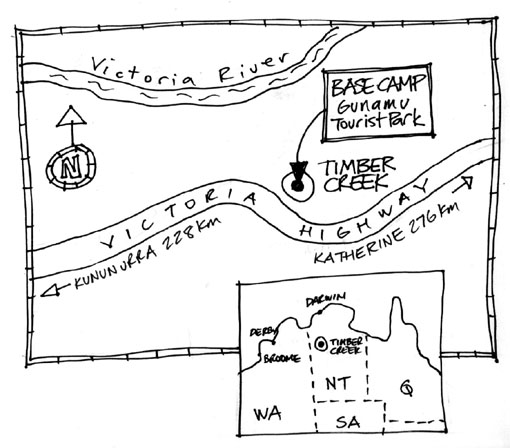

Get your Stop The Toad
bumper sticker here ..

Web Masters:
Use this button to
link back to this site.

Volunteers Handbook 2008Available here as a pdf file (826 kb in new window). It is strongly suggested that you download and print all of it or at least selected pages if you are attending. Volunteer
Registration Form Handbook also available below in html for perusal, quick checks or links to references (pp 13-14).
The STOP THE TOAD FOUNDATION Inc is a non-government, non-profit organisation created to combat the imminent infestation of the Kimberley and other parts of WA by cane toads. We aim to protect our unique native fauna from this deadly introduced species and to protect our wonderful toad-free lifestyles. Aim of The Great Toad Muster 2008 To undertake concerted control efforts at the time of year when toads are most vulnerable - at the end of the Dry season when they must congregate around remaining water bodies.
TOAD HISTORY Toads in Australia Cane toads were introduced to Australia in 1935, in an unsuccessful attempt to control sugar cane beetles. “From an initial release of 3000 young toads near Gordonvale, near Cairns, they have now spread south to the Clarence River/Yamba area of NSW, colonised at least 50% of Queensland, have spread across the Top End of the Northern Territory and are heading for Western Australia” (DEH 2005). The ISSG (Invasive Species Specialist Group) of the IUCN (World
Conservation Union) has Toads arrived in the Northern Territory during the 1980’s and hit southern Kakadu National Park in 2001, and reach as far south as Dunmarra (DEH 2005). Cane toads are said to be responsible for the extermination of Northern Quolls from parts of Kakadu and dramatically impact on goanna populations. They are known to cause deaths in a number of birds, fish, snakes, turtles, and crocodiles. Toads in WA (not yet thankfully!) Our current knowledge indicates that very small populations of cane toads are only 25 Km east of the Western Australian border. The aim of The Great Toad Muster 2008 is to reduce their numbers and to push them back as far east as possible before the rains arrive and they are free to move westward once again. At its heart the plan is to create a ‘buffer zone’ in the most toad unfriendly parts of the NT and to drive the toads back each year until a biological king-hit can be found to put the toad genie back in it’s bottle. NOTE: Cane toads are a declared animal pest in WA and it is illegal to keep them or bring them into the State.
ABOUT TOADS Identification Cane Toads are heavily built, with rough, warty skin and are generally 100-150 mm in length, but can grow up to 230 mm and over one kilo in weight. Cane toads’ skin is usually dry and leathery, and in adult specimens, females have a blotched and smoother skin, while males are more uniformly coloured and are rough, like fine sandpaper.
Hand Collection Hand collecting has so far proved to be a very effective method of collecting toads in large numbers. This will be one of the methods employed during the Great Toad Muster. At this time of year water is at its lowest in this country and (being amphibians) toads must have it. So they can be found congregated in or near shallows of any remaining water at night. Now they are vulnerable. Traps Traps will also be a major part of The Stop the Toad Foundation’s offensive during the Great Toad Muster. Traps have been constructed by school children across Western Australia and we will record toad numbers from each trap. Traps are one way of collecting toads, and come in many designs. The basic premise relies on a light powered by battery and solar panel, the light attracts bugs, which in turn attract toads to feed on them, and hopefully becoming entrapped in the process. Toads are then removed from these traps, placed in plastic bags and gassed. Trapping does not catch all toads, but is used to augment hand collection methods and can assist in both early-warning and mop-up operations. Fencing The erection of toad fences may be used in a number of ways, with different aims. Many are worthy of experimentation and some have been evaluated during the course of The Great Toad Muster 2007 with remarkable results e.g. The use of short, low fences placed around large waterholes to deter the movement of toads back into areas which have already been cleared. Fencing is a major strategy to be employed by STTF in 2008. LIFE STAGES; Adults Toads are picked up and placed in a plastic bag. Later they are sexed, counted, measured and then killed using CO2 (carbon dioxide gas is currently the most humane method available). A small net can be used if the toad is heading into water. A little experience will show you the best way to catch and pick up toads.
Metamorphs These are tiny toads which have just emerged from the water and are harder to catch. These guys are active by day, and quite numerous, also quite challenging to collect due to their small size and speed. When caught these can also be bagged and gassed. We are trialling a range of back pack delivered liquids that are apparently toxic to toads which may have application for metamorphs. Picture: Adult toad seeking refuge in crack of blacksoil
Cane Toad tadpoles are quite distinctive from native tadpoles, and are collected using nets. The tadpoles often group together and form a dark (black) mass on the water surface. Picture: Cane Toad tadpoles Eggs Eggs/spawn occurs in the shallows of waterholes and is like sticky and gelatinous string. It is quite distinctive from native frog spawn. They can be collected by hand or using a net. Picture: Cane toad eggs In keeping with the ethics of humane animal treatment and in accordance
with standards set
Picture: A toad in the hand is one less in the bush.
We will be out in the bush at water holes doing multiple, consecutive nights “toadbusting”. This means repeated busts on the same water hole over number of nights. This has been shown to effectively remove cane toads from a local area. We’ll also be establishing fences on suitable waterholes and undertaking reconnaissance. We’ll be doing other activities during the day and saving the most fun – toad busting for the night - when adult toads are active. There will be bury pits to dig, water to cart, maintenance of equipment as well as meal preparations and fence construction. Team Work Our Activities These will be varied. Generally most toad control work will be undertaken at night, however some daytime work will be required to provide surveillance, set traps out, erect barrier fencing, and search for spawn and tadpoles. It’s also during the day when sightseeing and bird watching will be at their best. We anticipate that activities will be around 3-4 hours during the day, and 3- 4 hours at night, depending on the level of toad activity. Most participants can expect to work both a daylight and a night-time shift. Picture: An example of catching cane toads in the field, note the long sleeves, and pants, head torch, spot light, backpack/water carrier and captured toad. Note the toad has ‘blown up’ its body to make itself look larger. How shifts are taken will depend on a range of variables, but will be clarified at the beginning of each field shift. Participants should expect to walk up to 6 Km per day. This could be along rocky creek lines or around flat floodplain billabongs. Safety will be of the highest priority to all team members. Remote field camps will be established at the longer distance water holes. These field camps will be where teams stay over night for consecutive ‘toadbusting’ nights. Work times Day work is best carried out during the early hours before it gets too hot, with night time work starting after dinner. Travel to night toad busting sites will happen before it’s dark, to allow teams time to familiarise themselves with the habitat, and for safer travel. 7 Typical timetable for Great Toad Muster activities: Day time: travel, reconnaissance, surveying new areas, setting up and breaking down barrier fencing, clearing toads from cattle foot pugs, traps, dams, and any other work required. Evening/night time: travel, assess sites, toad bust water bodies, process toads Around camp: toad processing & data collection, radio schedules, fun stuff, cooking, preparing equipment and maintenance etc Around ‘office’: helping out with administrative tasks Number of hours: 4-8 hours a day We hope to establish an operations camp in Timber Creek to be located at the Timber Creek Gunamu Tourist Park (a gorgeous location). We will organise access to hot and cold showers, shady camp sites, washing machines, and a swimming pool (the only place to safely swim - see section on Crocodiles). We also hope to have access to occasional air-conditioned dongers available for anyone who is feeling the heat. Timber Creek does have a small supermarket and a pub (both with limited selections) within easy walking distance. Field Camps It is most likely that we will establish a base camp on Auvergne Lagoon on Auvergne Station – this will support mobile field camps that will be basic, with camping in swags (or stretcher beds) and mozzie domes. Cooking will be on gas stove or campfire and food will be provided. It is important to maintain good personal hygiene while in camp eg. Toileting and handling cane toads - wash your hands regularly. Cold showers (a delight in hot conditions) are likely to be available, along with porta loos. Field camps will be ‘dry’ i.e. a no alcohol policy applies. Contact will be maintained with HQ through daily radio schedules, emergency communications will rely on satellite phones. EXPECTED BEHAVIOUR Whether you are there for a couple of nights or the full duration of the Muster, you will be part of a team and respect for others will be an important ingredient for all participants to bring to the mix. Alcohol and field work do not mix so social drinking must be confined to times when it will not impair your work abilities. Bring some ways of amusing yourself. There will be some forms of entertainment provided. If you have any problems or concerns relating to safety, food, health, or other people you should always let the Personnel Coordinator know. Anybody displaying antisocial behaviour, undertaking illegal acts or breaking the stated Muster rules, will be asked to leave.
GETTING TO TIMBER CREEK
Picture: Lake Argyle – worthwhile visiting whilst you are in the area HEAD QUARTERS (HQ) Timber Creek is a very small place so finding us won’t be a problem. Look for signs directing you to HQ at the Gunamu Caravan Park.
9 ACCOMMODATION AND FOOD
All persons are required to help with domestic duties. Daily duties such as cooking, washing up and general organisation are the responsibility of all involved. FACILITIES AT TIMBER CREEK Timber Creek has some service facilities for basic needs.
HAZARDS Climatic conditions September and October see rising temperatures in this region, with temperatures during the day, routinely in the high 30°s, and nights in the low to mid 20°s. Humidity is generally low during the day, and increasing overnight to be somewhat muggy and uncomfortable. Rain is possible at this time of the year. While this may seem ideal from a southern winter perspective, it’s important to note that dramatic changes in climate can leave you feeling drained, fatigued and generally unwell. It’s important to take your first few days easy and not to overdo it, and drink heaps of water to stay hydrated. It will also be dusty with the potential for plenty of flies and there is always the likelihood of occasional Whirlwinds on the Whirlwind Plains, so be prepared. Dehydration This is a hot and dry climate. It is vitally important to drink constantly during the day to stay hydrated, the usual rule of 2L per day, can be as high as 6 – 8 litres a day depending upon the level of activity you undertake. It will be important for you to be aware of the symptoms of dehydration and heat illness and look for them in both yourself and your team mates. Crocodiles This is Saltwater Crocodile (Crocodilus porosus) country, and as such great care needs to be taken around ALL water bodies. The only swimming allowed will be in the pool at the caravan park – no exceptions. More information about Crocodiles will be provided during your orientation. Snakes Many venomous snakes inhabit this area, although their numbers have been depleted by cane toads. Do not attempt to catch or kill any snake you see, as this is when the vast majority of bites occur. Due to the remote nature of our work, avoidance is the key. Carry an elastic bandage in your backpack or pocket at all times (will be provided). First aid for snake bite will be covered in more detail during your orientation. Due to our proximity to waterways, mosquitoes will be present and active. Ross River Fever, Murray River Encephalitis, Barramah Forrest virus and Kunjin virus are known to be present in the area. It is strongly recommended you take precautions to avoid mosquito bites – wear long loose fitting clothing and use insect repellents when necessary. Toads Cane Toads have toxic secretions, which can cause irritation and
potentially death (if eaten), with this in mind, it is important
to maintain high hygiene levels and wear gloves when dealing with
Allergies If you suffer from hay fever, due to the dry and the dust and potential flowering of plants, you may need to bring lots of your hay fever medication. If you suffer from food allergies please discuss this with staff, as it will be difficult to source food products which don’t contain wheat or nuts, for example. Conjunctivitis Another condition that may arise is dry or infected eyes (especially if you are not acclimatised to the local conditions). You may wish to purchase some artificial tears or antibiotic eye drops, if you know you are prone to this condition. Fire This is a highly flammable landscape. While fire is used at as a land management tool, this is the wrong time of year for landscape size fires. Great care needs to be taken with the use of camp fires, with no fires allowed during total fire ban days. Fires will only be lit in designated areas, and mainly for cooking. BRING ALL MEDICATIONS
YOU MAY NEED WITH YOU YOU NEED TO BRING
EMERGENCY NUMBERS Ensure your family and friends know where you are. Leave them
with the following emergency contact numbers in case they need to
contact you – these are also available on the www.stopthetoad.org.au
website. We will also provide you with satellite phone contact numbers
These numbers should be used ONLY IN CASE OF EMERGENCY;
Timber Creek Police Station (only if unable to get through on the number(s) above and the situation warrants Police assistance) 08 8975 0733 WORKSITES AND PERMITS Our activities are governed by the requirements of landholders and various legislation. Please note that neither guns nor dogs are allowed onto Auvergne Station (unless approved) or in the Gregory National Park. Timber Creek Township Is situated 285 Km west of Katherine, NT, and 232 Km east of Kununurra, WA. Cane toads were first found here during the 2005-06 wet seasons. Auvergne Station Pinkerton Range, Whirlwind Plain and East and West Baines Rivers. Much of our work will be carried out on Auvergne Station. This is a commercial cattle property, and it is a requirement of management that all visitors undergo an induction and agree to a range of operating conditions while on the property. STTF has agreed to operate within these conditions and provide an induction for all volunteers. This induction will be undertaken prior to your first posting to Auvergne. Most of the work undertaken here is on the Whirlwind Plain and mostly over relatively flat ground, but it is quite dry and dusty, with sparse shade. As this is a working station, cattle must not be disturbed, and a lookout maintained for crocodiles, wild pigs, buffalo and cattle. Gregory National Park Gregory National park is bounded by the Victoria River to the North, Auvergne Station to the West and the township of Timber Creek and Aboriginal Land to the east and south. A permit is required from the Northern Territory Parks and Wildlife Service to take fauna from a national park. You will be asked to fill in such permit applications as required if you are allocated to this area. If you are a photographer, a permit is also required to use any images of the park commercially. A permit may also be required to work on the aboriginal land which surrounds the Timber Creek Township. There should be a number of Aboriginal groups and people working as part of The Great Toad Muster and this provides an opportunity for cross cultural exchange. The organisers aim to provide some information on cross-cultural communication as part of induction to The Great Toad Muster. This will be detailed further during your orientation. EXTENDING YOUR STAY Got more time up your sleeve? This is a great place to visit, close to Katherine and Kakadu NP. Those with a four wheel drive, might like to consider a visit to the southern sections of Gregory National Park, adjacent to Timber Creek. Self drive or commercial tours are available to all major locations. Further information can be found at the following web sites or the NT Tourism Office in your state. Kakadu National Park Info about tourism in the Katherine Region (which includes Timber
Creek) General NT tourism site NT Parks and Wildlife Commission for info about Northern Territory
National Parks TRAVELLING IN WA Kununurra tourist information Broome tourist information FURTHER READING ABOUT TOADS The Federal Governments listing of Cane Toads as a ‘Key threatening
process’ A range of documents about cane toads and other feral animals A range of information on invasive species from the IUCN IUCN info page on Cane Toads
If you don’t have some stuff, talk about it with STTF staff BEFORE you leave home. We may be able to provide what you need. If you have any further queries please don’t hesitate to
contact: ACKNOWLEDGEMENTS Special thanks to Gregory National Park staff for supplying guidance via the Devils Claw Festival documents and the community of Timber Creek for their invaluable assistance. Photos: Derek Monks, Karen Rusten and Kim Hands
|
Supported by |
 |
Web Manager: Dave Graham - Web hosting & scripts: Alex Varlakov http://ozup.com/ |


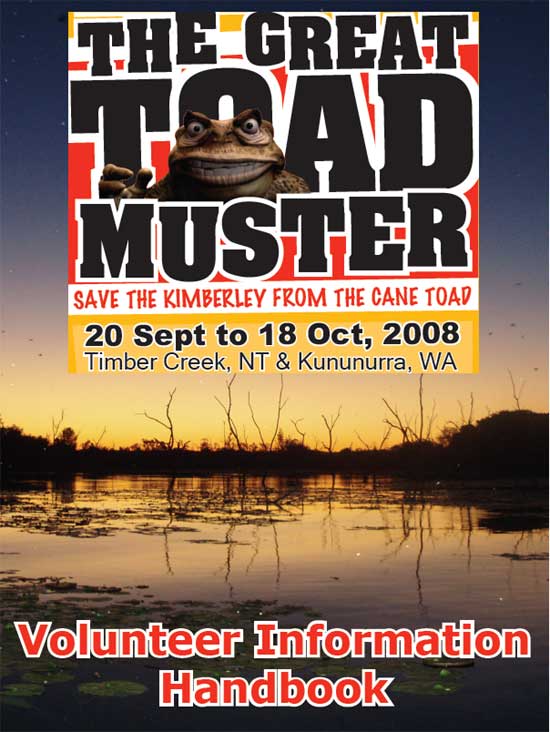
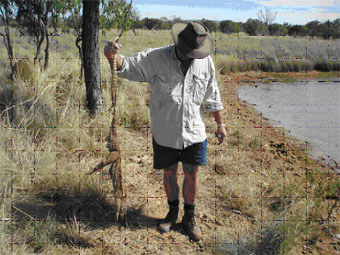
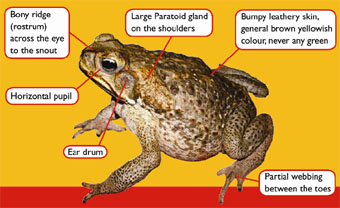
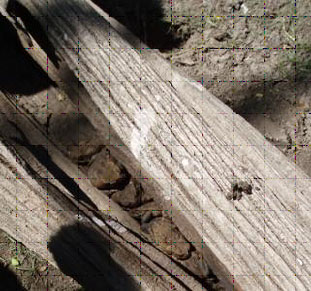 Picture: Toads seeking refuge in hollow logs around
a drying waterhole
Picture: Toads seeking refuge in hollow logs around
a drying waterhole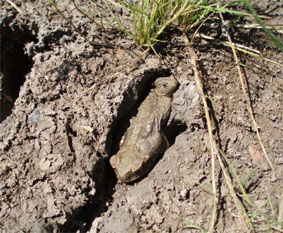
 Euthanasia
Euthanasia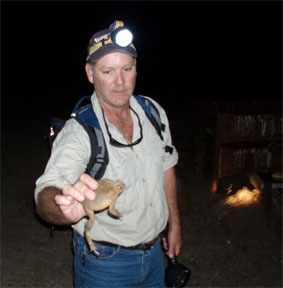 All
field work will be undertaken under the supervision of team leaders.
Team leaders will be experienced in this country and have First
Aid qualifications. Most teams will move about the country in 4WD
vehicles.
All
field work will be undertaken under the supervision of team leaders.
Team leaders will be experienced in this country and have First
Aid qualifications. Most teams will move about the country in 4WD
vehicles.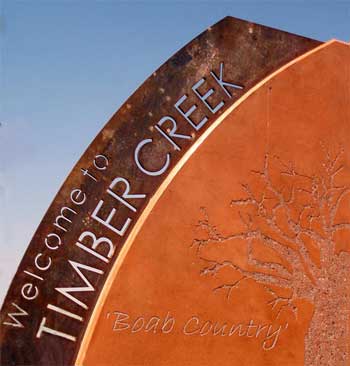 Base
Camp – Timber Creek
Base
Camp – Timber Creek